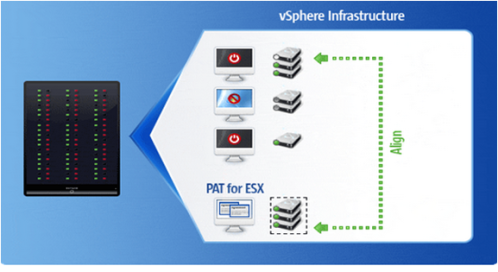As newer 4K Advanced Format hard disk drives become more prevalent in the virtual environment, partition alignment issues continue to increase in frequency (especially, with machines running Microsoft XP and Server 2003) — and are now permeating the virtual environment. The problem of partition misalignment is that it causes slow write times and inefficient disk operations because the physical and the logical sectors are not aligned. The misalignment causes redundant read/write operations, thus putting unnecessary strain on the hardware. The Paragon Alignment Tool (PAT) ESX version follows on our partition alignment software technology in PAT 3.0, launched a few months ago for consumer products.
PAT ESX was developed to facilitate remote partition alignment of virtual systems. PAT ESX requires minimal virtual disk space (only 3 – 4MB per disk) to perform partition alignment with no need for additional space on the system for snapshots or copies of the processed volume. Should an unexpected interruption occur, the alignment operation can be continued without loss of data or need for restoration.

Click on the image to see a video on Paragon's partition alignment software for virtual environments
With the growing trend in resource consolidation through virtualization, we are seeing significant increases in the number of virtual servers and workstations. Due to the transition of the storage standard from 512B to 4K sectors, the appearance of partition misalignment and performance issues in these systems are increasing. Our customers’ need to resolve these issues is what drove the development of PAT ESX!
The partition alignment software provides easy and comprehensive management for virtual disk alignment operations. Installed on an administrator’s machine within the ESX environment, PAT ESX enables remote access to all virtual disks to check their state and perform alignments in an unattended mode. PAT ESX allows an administrator to browse data stores, select target virtual machines, and then connect to virtual disks to determine whether partition alignment is required. PAT then recommends alignment options if needed.
The Partition Alignment Tool Benefits include an increase virtual machine operations’ performance up to 300 percent, External control, management and alignment of dozens of virtual drives located on different virtual servers (no need to install on every virtual machine); and a decrease hardware costs by eliminating the need to have storage dedicated for migration functions.
To learn more about PAT for ESX, see our press release at Paragon Alignment Tool™ 3.0 for ESX® Now Available for Remote Partition Alignment in the Virtual Environment

